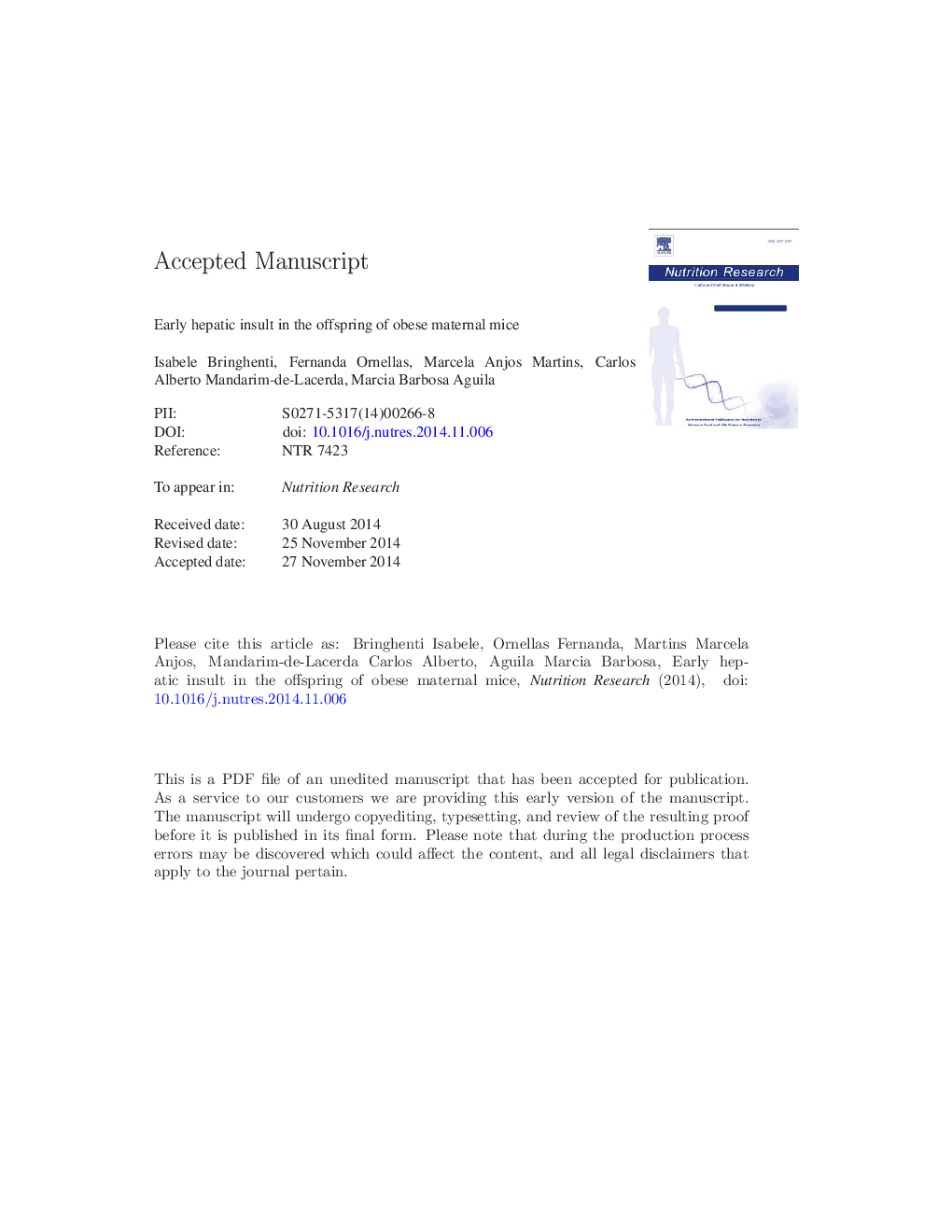| Article ID | Journal | Published Year | Pages | File Type |
|---|---|---|---|---|
| 5904539 | Nutrition Research | 2015 | 38 Pages |
Abstract
We hypothesized that the maternal obesity initiates metabolic disorders associated with oxidative stress in the liver of offspring since early life. Mouse's mothers were assigned into 2 groups according to the diet offered (n = 10 per group): standard chow (SC) or high-fat diet (HF). The results revealed that HF offspring had an increase in body mass at day 10 (+25%, P < .05) and in glucose levels (+25%, P < .0001). Hepatic triacylglycerol was increased in HF offspring at day 1 and day 10 compared with SC offspring (+30%, P < .01 and +40%, P < .01) as was hepatic steatosis (+110%, P < .001; +145%, P < .0001). Fatty acid synthase was increased in HF offspring at day 1 (+450%, P < .01) and peroxisome proliferator activator receptor-γ was elevated at day 1 and day 10 (+140%, P < .01; +2741%, P < .01). Peroxisome proliferator activator receptor-α was diminished in HF offspring at day 10 compared with SC offspring (â100%, P < .01). Moreover, carnitine palmitoyl-CoA transferase-1 was decreased in HF offspring at day 1 and day 10 (â80%, P < .01; â60%, P < .05). In the HF offspring (compared with the SC offspring), the catalase and the superoxide dismutase were significantly lower in both days 1 and 10 (P < .05). In 10-day-old offspring, glutathione peroxidase 1 and glutathione reductase were lower in HF offspring than in SC offspring (P < .0001). Our findings suggest that the maternal obesity in mice induces an early oxidative dysfunction coupled with hepatic steatosis and might contribute to progressive liver injury later in life.
Keywords
RT-qPCRNAFLDTNFOGTTGRsDIOMnSODPPARGPXFFAFASCPTCATROSβ-oxidationOral glucose tolerance testHepatic steatosisstandard chowStereologyfatty acid synthaseFree fatty acidsMetabolic programmingNonalcoholic fatty liver diseasetriacylglycerolTAG یا triacylglycerols Oxidative stressBody masshigh-fat dietSODmanganese superoxide dismutaseSuperoxide dismutasetumor necrosis factorLipogenesisInsulin resistanceMicereal-time quantitative polymerase chain reactiondiet-induced obesityCatalaseglutathione reductaseglutathione peroxidaseReactive oxygen species
Related Topics
Life Sciences
Biochemistry, Genetics and Molecular Biology
Endocrinology
Authors
Isabele Bringhenti, Fernanda Ornellas, Marcela Anjos Martins, Carlos Alberto Mandarim-de-Lacerda, Marcia Barbosa Aguila,
